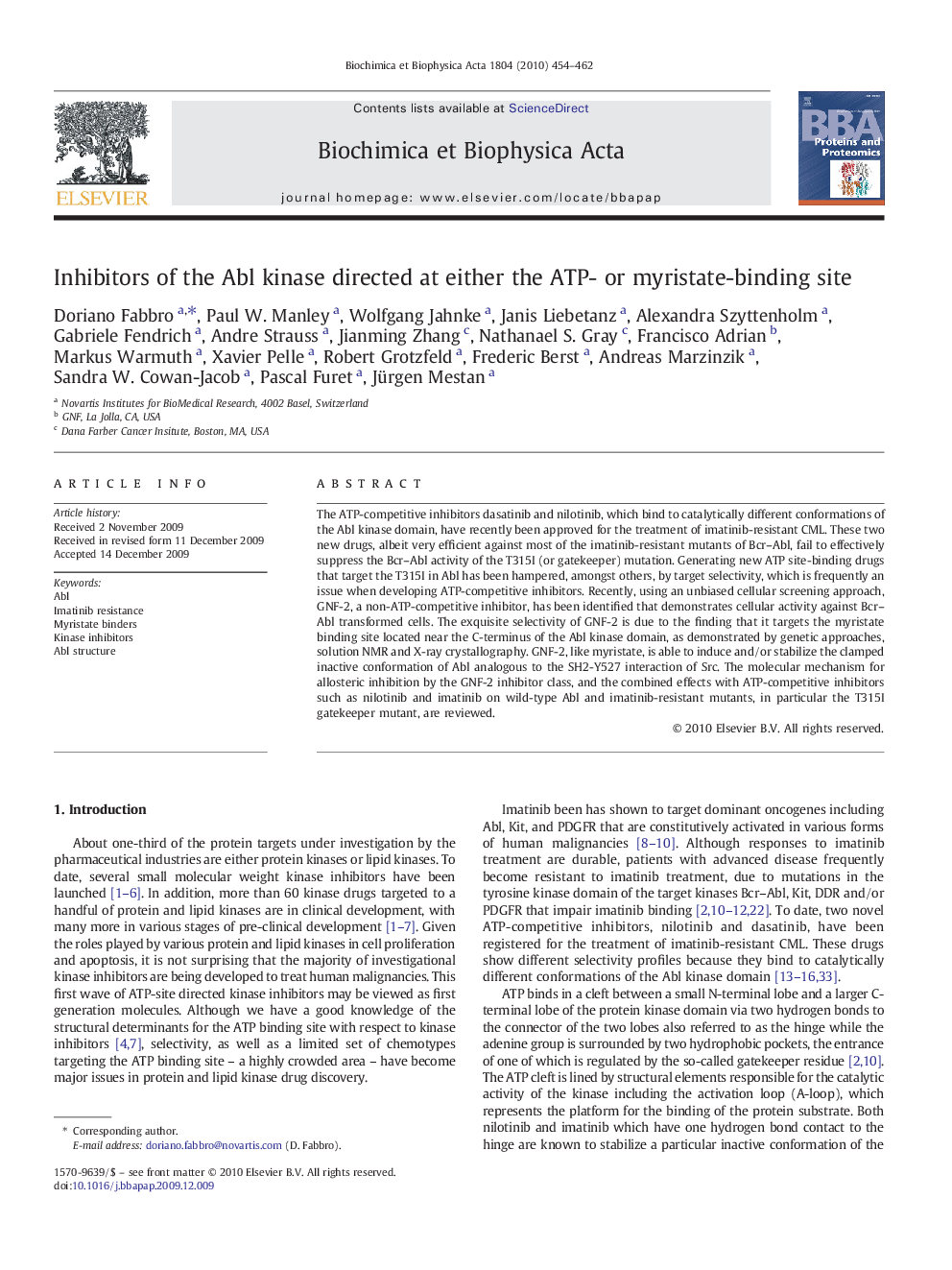| Article ID | Journal | Published Year | Pages | File Type |
|---|---|---|---|---|
| 10537774 | Biochimica et Biophysica Acta (BBA) - Proteins and Proteomics | 2010 | 9 Pages |
Abstract
The ATP-competitive inhibitors dasatinib and nilotinib, which bind to catalytically different conformations of the Abl kinase domain, have recently been approved for the treatment of imatinib-resistant CML. These two new drugs, albeit very efficient against most of the imatinib-resistant mutants of Bcr-Abl, fail to effectively suppress the Bcr-Abl activity of the T315I (or gatekeeper) mutation. Generating new ATP site-binding drugs that target the T315I in Abl has been hampered, amongst others, by target selectivity, which is frequently an issue when developing ATP-competitive inhibitors. Recently, using an unbiased cellular screening approach, GNF-2, a non-ATP-competitive inhibitor, has been identified that demonstrates cellular activity against Bcr-Abl transformed cells. The exquisite selectivity of GNF-2 is due to the finding that it targets the myristate binding site located near the C-terminus of the Abl kinase domain, as demonstrated by genetic approaches, solution NMR and X-ray crystallography. GNF-2, like myristate, is able to induce and/or stabilize the clamped inactive conformation of Abl analogous to the SH2-Y527 interaction of Src. The molecular mechanism for allosteric inhibition by the GNF-2 inhibitor class, and the combined effects with ATP-competitive inhibitors such as nilotinib and imatinib on wild-type Abl and imatinib-resistant mutants, in particular the T315I gatekeeper mutant, are reviewed.
Related Topics
Physical Sciences and Engineering
Chemistry
Analytical Chemistry
Authors
Doriano Fabbro, Paul W. Manley, Wolfgang Jahnke, Janis Liebetanz, Alexandra Szyttenholm, Gabriele Fendrich, Andre Strauss, Jianming Zhang, Nathanael S. Gray, Francisco Adrian, Markus Warmuth, Xavier Pelle, Robert Grotzfeld, Frederic Berst,
